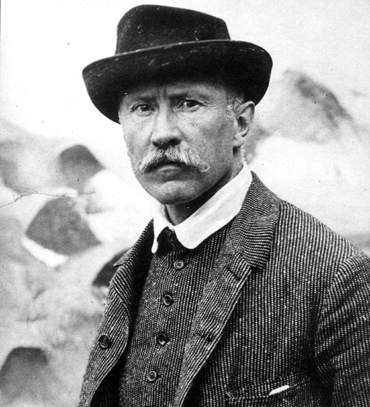Updated 2021-08-28
Bullerö – early history
The early cultural history of Bullerö is relatively unknown. However, there are signs of settlements that probably are older than the 17th century. It is not until 1653 that permanent settlements were documented. In 1688, a larger cottage was built at Bullerö, which belonged to the farm at Östanvik, Nämdö. During the beginning of the 19th century, Bullerö was partitioned, and in 1866, three different families lived on Bullerö.
The small cottages
In 1790, circuit judge Magnus Blix, the owner of Östanvik farm at the time, decided that four cottages was to be built in the archipelago of Östanvik. The crofts that were built were Hamnskär, Skogavik, Brunskär, and Rågskär. Rågskär was the first croft was built. The first crofter of the island was Johan Nyström from Nämdö. The construction of Skogavik, Brunskär, and Hamnskär started somewhere between the end of the 18th century and the beginning of the 19th century. Soon, all crofts were habited all year long.
The habitants of the islands lived from agriculture, hunting, and fishing. Fish was the most important nutrition and in Stockholm the demand for salted fish was immense; the crofters could therefore sell their fish for grains. The people in the archipelago never lacked food, but sometimes other conditions were hard. The meadows served as small fields, where potatoes and root crops grew. The fields were cultivated with the help of wooden plows, that often were pulled by the crofters.
Östanvik
The farm at Östanvik had many owners. The most famous was Gustav Pott, who was a very special person. He demanded a lot of services from his crofters and that everything went fast when needed. The Sandström family builded brigdes between Rågskär and Idöborg and between Ormskär, Brunskär, and Hamnskär. The total length of the bridges was 2.5 km. Many of the bridge brackets are still there, and a copy of the bridges can be found on Rågskär.
In 1908, the people who lived at Bullerö left the island, and after the Second World War, all islands in the area had lost their all-year-round habitants.
Bruno Liljefors
The artist Bruno Liljefors bought Bullerö (and the closest 300 islands) in 1908, and in 1909 he built a studio at Bullerö. From this point, life at Bullerö changed significantly. The island got its first supervisor, Karl-Gustav Sundberg, and a ”Bullerö-team” started to hunt and party together. The ”Bullerö-team” consisted of Albert Engström, the air baron Carl Cederström, and Bruno Liljefors himself of course.
Torsten Kreuger
In 1923, Bruno Liljefors sold his Bullerö with its 300 belonging islands to the financier Torsten Kreuger, also known as the ”Newspaper King”. Torsten Kreuger also bought Gustav Potts’ islands. The islands he owned, are the islands that today make Bullerö nature reserve.
Torsten Kreuger’s son Björn had a great interest in the conservation and protection of nature. He lived in the area during the 50s and 60s. During this time, plundering and vandalization of nests was common. Björn therefore bred sea eagle and eagle owl. In addition, he let build special covers for the trees that prevented people from climbing them. These covers can today be observed at Bullerö.
Nature reserve
In 1967, Torsten Kreuger sold the entire area, with its 900 islands, to the state. He had two conditions: that the area would be made to a nature reserve and that it would be available to the public. People that wanted to exploit the area offered Torsten Kreuger as much as 80 million SEK, but Torsten magnanimously chose to sell it to the state for 4 million SEK instead.
Since then, the area is a nature reserve. Today, a lot of effort is put in recreating the old agricultural landscape, renovating the old houses with regard to the cultural history, and making sure that the area is welcoming and that everyone gets the opportunity to enjoy the fantastic flora and fauna.

